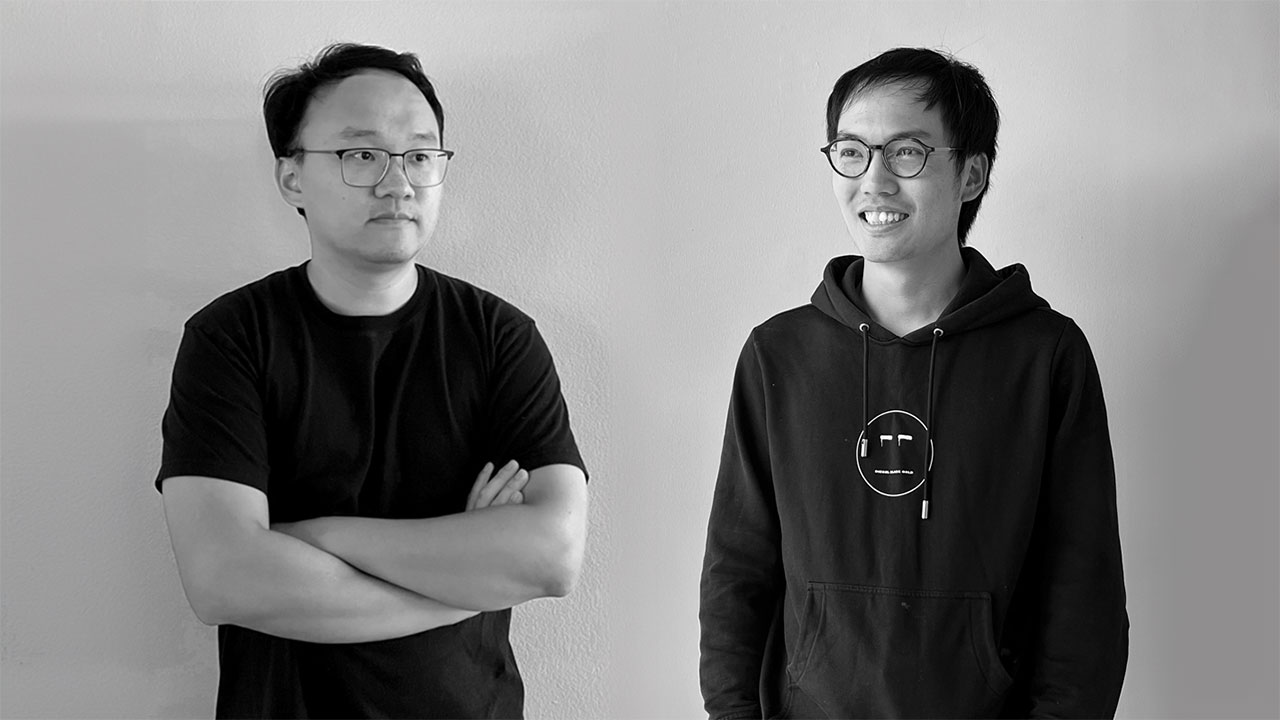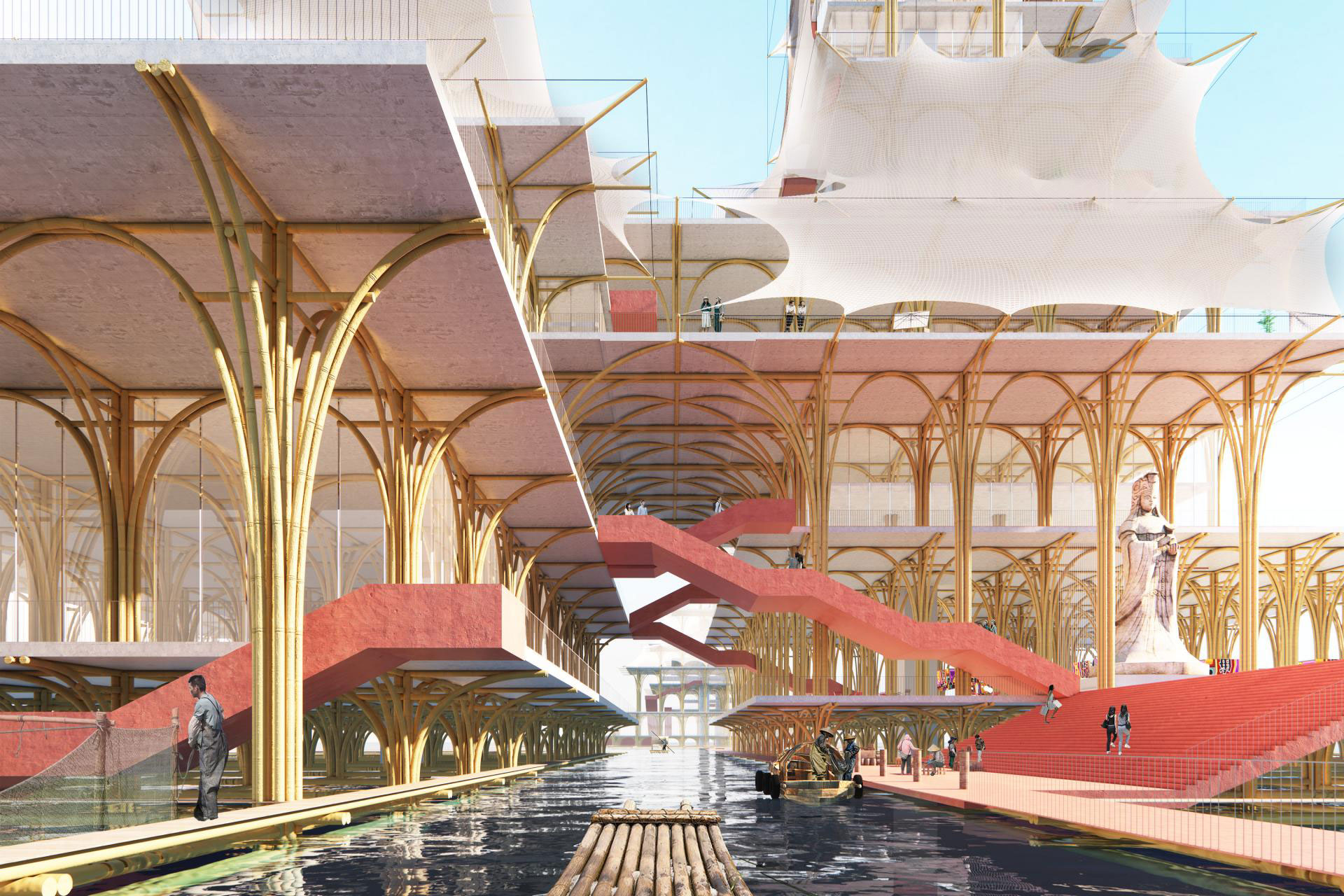Interview with Renyi Zhang & Xianming Sang

Interview with Zhuyuan He from the United States
July 2, 2024
Interview with TA Design Studio
July 2, 2024Renyi Zhang & Xianming Sang
Renyi Zhang and Xianming Sang are accomplished architects with practices that span the U.S. and international projects. Zhang's experience includes diverse projects from various backgrounds, while Sang specializes in creating innovative spaces for art exhibitions and fashion shows, showcasing their versatility and creativity in architecture.
Renyi Zhang: I'm an architect and urban designer with a practice spanning the east and west coasts of the U.S. I earned my Master's degree in Architecture in Urban Design from the Harvard University Graduate School of Design (GSD). Following graduation, I practiced at Sasaki and Perkins&Will, prestigious international firms. After working at these renowned firms, I then engaged in diverse projects with clients from various backgrounds, both nationally and internationally.
Xianming Sang: I'm an accomplished architect with a MArch degree from Harvard and several years of professional experience. With a background that includes roles at prestigious firms such as Perkins + Will, OMA and Junya Ishigami, I then amassed extensive expertise in designing large-scale office and residential buildings.
Additionally, I excel in creating innovative spaces for art exhibitions and fashion shows, demonstrating versatility and creativity across various architectural domains.
We chose to become architects and urban designer because of our passion for solving complex spatial and social challenges through innovative design. We were drawn to the profound impact that thoughtful design can have on the lives of individuals and communities.
Architecture offers a unique opportunity to blend creativity with practical solutions, aiming to make spaces not only functional but also inspiring and sustainable. This alignment of creative expression and tangible impact on society deeply resonates with my personal and professional goals.
To us, "design" means envisioning and creating spaces that enhance human experiences while respecting and integrating the natural environment. It's a process that combines innovation, functionality, and aesthetics to meet the specific needs of a community.
Design is not just about the physical form; it's about solving problems, fostering social interactions, and ensuring sustainability. This holistic approach guides our projects, helping us create solutions that are not only viable in the present but also adaptable and resilient for the future.
Our favorite kind of design is sustainable architecture because it aligns with our values and the challenges of our time. We are particularly drawn to projects that seamlessly integrate environmental and social consciousness with innovative architectural solutions.
This type of design not only addresses the urgent need for sustainability but also enhances the quality of life for its users, contributes positively to the surrounding ecosystem, and fosters cultural and social sustainability. The ability to create spaces that are both aesthetically pleasing and environmentally and socially responsible provides a profound sense of fulfillment and purpose in our work.
To us, a "good" design is one that achieves a balance between functionality, sustainability, and aesthetics. It must effectively address the needs of its users while minimizing environmental impact and enhancing the surrounding community.
A good design also respects cultural heritage and integrates local materials and traditions, making it both meaningful and contextually appropriate. Additionally, it should be adaptable, capable of evolving over time to meet changing needs without losing its integrity or functionality. This approach ensures that our designs are not only efficient and beautiful but also enduringly relevant.
Our design style is characterized by sustainability, adaptability, and a deep respect for cultural context. We favor a pioneering approach where innovation meets traditional practices, blending old and new to create functional, forward-thinking spaces.
Our designs are often modular and scalable, reflecting our commitment to environmental stewardship through the use of recyclable materials and energy-efficient systems. We prioritize open, fluid spaces that foster community interaction and connection to nature, ensuring that our structures are not just buildings, but vibrant, living environments that adapt to the needs of their inhabitants.
Our design process begins with a deep understanding of the context and the specific needs of the community. We engage with local stakeholders through interviews and workshops to gather insights and perspectives that inform our design. This collaborative approach ensures that our solutions are grounded in real-world requirements and cultural significance.
From there, we move into the conceptualization phase, where we explore various design options and iterate based on feedback. We employ sustainable design principles from the outset, integrating environmental, social, and economic considerations to ensure that our projects are viable long-term.
Finally, we refine our designs through detailed modeling and simulations, adjusting for factors like material efficiency, energy consumption, and environmental impact. This thorough, iterative process allows us to deliver designs that are not only innovative and beautiful but also practical and sustainable.
Our Chinese heritage deeply influences our design process. The rich cultural, historical, and philosophical traditions of China inform our approach to space, form, and community. We integrate principles such as harmony with nature and the balance of yin and yang, which guide our use of space and light, and our selection of materials.
Additionally, the communal aspect of Chinese society shapes our focus on creating designs that foster community interaction and social connectivity. By weaving these cultural elements into our projects, we ensure that our designs are not only functional but also resonate with cultural significance, making them more meaningful and effective for the users.
Receiving the 2024 MUSE Design Awards is a tremendous honor for us and a validation of our team's dedication to innovative and sustainable architecture.
This recognition not only elevates our standing in the global design community but also reinforces our commitment to pioneering projects that address social, cultural, and environmental challenges. It boosts our team's morale and motivates us to continue pushing the boundaries of what is possible in architecture and urban design.
Our winning entry, "Floating Livelihood," was selected for the 2024 MUSE Design Awards due to its innovative approach to sustainable and adaptive community design. This project, developed for the Dan Family in Hainan province, China, addresses both the preservation of cultural heritage and the environmental challenges posed by traditional coastal settlements.
We chose to enter this project because it exemplifies our commitment to solving complex issues through architecture, particularly the integration of sustainability with economic and social development. The design features a vertical fishery skyscraper that uses renewable energy, recycled materials, and integrates aquaculture with residential and commercial spaces.
Our entry highlighted how we could maintain cultural traditions while innovatively adapting to modern needs and environmental concerns, making it an ideal candidate for an award that values design excellence and innovation.
The biggest challenge with the "Floating Livelihood" project was designing a sustainable and adaptive structure that could meet the complex needs of a rapidly growing coastal community while respecting their cultural traditions and minimizing environmental impact.
Balancing the traditional ways of life of the Dan Family, such as their fishing practices and communal living, with modern technological interventions posed significant complexities.
Winning the 2024 MUSE Design Award has been a significant milestone for us, providing recognition and encouragement to continue pursuing sustainable and innovative architectural solutions.
It validates our focus on sustainability and has inspired us to deepen our commitment to developing projects that address environmental and societal challenges. This achievement motivates us to keep pushing the boundaries of sustainable design in our future work.
Innovation and Creativity: We thrive on the opportunity to innovate and creatively solve complex problems. Every project presents unique challenges that require tailored solutions, blending aesthetics with functionality in exciting ways.
Impact on Society: The ability to shape environments and influence how people live, work, and interact within spaces is profoundly rewarding. Our work has a lasting impact, contributing to community well-being and sustainability.
Cultural Integration: We value the chance to delve into different cultures and histories, integrating these elements into our designs. This not only enriches our work but also helps preserve and celebrate cultural heritage through modern architectural practices.
China's unique position in the design industry stems from its rich cultural heritage blended with rapid modernization. This juxtaposition offers a unique canvas for architectural and design innovations.
Firstly, China has a profound historical legacy with traditional philosophies like Feng Shui and Taoism, which influence modern design principles, emphasizing harmony between humanity and nature.
Secondly, as one of the fastest-growing economies, China embraces cutting-edge technology and sustainable practices, pushing the boundaries of what's possible in green architecture and smart cities.
Lastly, the scale of urbanization in China provides unparalleled opportunities to experiment with new urban planning ideas and architectural forms, making it a dynamic laboratory for architectural innovation and experimentation.
Over the next 5-10 years, the design industry is likely to evolve significantly towards sustainability, technology integration, and user-centric approaches:
Sustainability: As environmental concerns become increasingly urgent, sustainable design will move from a niche specialty to a fundamental industry standard. This will involve more advanced use of eco-friendly materials, energy-efficient systems, and designs that minimize ecological footprints while maximizing resource reuse and recycling.
Technological Integration: The incorporation of technology in design will deepen, with innovations like artificial intelligence (AI), virtual reality (VR), and augmented reality (AR) becoming standard tools for architects and designers. These technologies will enhance precision in design processes, allow for better visualization and simulation of projects, and enable more personalized user experiences.
User-Centric and Adaptive Designs: There will be a greater emphasis on designs that are adaptable to changing needs, focusing on flexibility in usage and scalability. This shift will be driven by changing demographics, work patterns, and a heightened emphasis on health and wellness, requiring environments that can dynamically adjust to user needs over time.
Embrace Sustainability: Learn about sustainable design practices and consider how you can incorporate these into your projects. Sustainability is becoming increasingly important in the industry, and having a solid grasp of eco-friendly materials and energy-efficient design strategies will set you apart.
Practice and Critique: Regular practice and seeking critiques from peers or mentors are vital. Engage in design challenges or competitions, even if they are informal or internal to your school or workplace.
We are greatly inspired by and learn from many historically renowned architects, among them three are most important:
Renzo Piano, whose mastery in integrating cutting-edge technology with design is profoundly influential in our work; Herman Hertzberger, known for the order and human scale of his works; and Alvaro Siza, celebrated for the poetics of space in his designs.
Our key to success is a steadfast commitment to innovation, sustainability, and community engagement in every project we undertake. Our parting words of wisdom for aspiring designers are:
Stay curious, embrace challenges as opportunities for growth, and never underestimate the impact of thoughtful, well-executed design on improving human lives and the environment. Keep pushing boundaries and strive to make meaningful contributions through your work.
We'd like to emphasize the importance of community involvement in the design process. Engaging with the people who will live in and use the spaces we create is crucial for producing designs that are not only innovative but also truly beneficial and sustainable.
As we look to the future, we remain committed to exploring new technologies and methodologies to enhance our designs further, ensuring they meet the evolving needs of communities and the environment in a responsible and thoughtful manner. We believe that architecture should not only respect the past and serve the present but also inspire the future, creating a lasting legacy.
Renyi Zhang and Xianming Sang
Renyi Zhang and Xianming Sang are accomplished architects with practices that span the U.S. and international projects. Zhang's experience includes diverse projects from various backgrounds, while Sang specializes in creating innovative spaces for art exhibitions and fashion shows, showcasing their versatility and creativity in architecture.
Read more about this interview with Zhuyuan He from the United States, the Silver Winner of the 2024 MUSE Design Awards.


